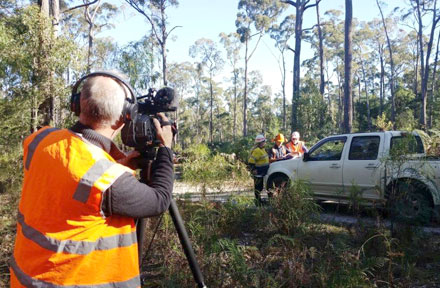
The crew from 7MATE’s Going Bush recently joined VicForests, and a team of auditors, to learn how native timber harvesting operations are certified in Victoria. Source: Timberbiz.
The story will air on 7MATE, Saturday 13 January 2018 at 10.30am and will then be available on the VicForests website and VicForests YouTube Channel.
Lachlan Spencer, VicForests General Manager Stakeholders and Planning said that forest certification is important to VicForests because it provides reassurance from third-party experts that their operations comply with internationally recognised environmental standards.
“Timber is one of the most environmentally friendly resources in the world as it is completely renewable,” Mr Spencer said.
“VicForests regrows all harvested areas with the same type of forest that was originally there.
“Timber stores carbon even after it has been converted into furniture and other wood products and is managed by world-class standards in Australia,” he said.
For more than a decade, VicForests has been certified to the Responsible Wood Certification Scheme (previously Australian Forestry Standard), which is internationally recognised by the world’s largest certification scheme, PEFC.
“Customers of timber products look to the forests and want to see it sustainably managed, but it’s a very complex question.
“Having the branded certification on our timber products confirms for them that we are responsibly managing the forest and producing timbers they can use with confidence,” Mr Spencer said.
Responsible Wood sets out hundreds of checks and balances which forest managers must meet to achieve and retain certification. At is heart is the goal of managing forests to maintain their full range of environmental, social, cultural and economic values.
In order to maintain certification, VicForests is audited regularly by independent experts to ensure the standards are being met.
“VicForests undergoes surveillance audits every nine months and we undertake a full-scale audit of all our operations every three years to retain certification,” Mr Spencer said.
“The auditors look into whether we are correctly applying the required management processes and are protecting all the necessary environmental values and biodiversity in the forest.
“After each surveillance audit we receive a report and within the report it identifies areas for improvement, which we work to address prior to the next audit.
“The challenge with forest management is it’s a dynamic environment. As we learn more about a particular species or area there are opportunities to apply new methods.
“There’s always new technology, new knowledge and things we can learn from that we might be able to try to improve our outcomes,” he said.







